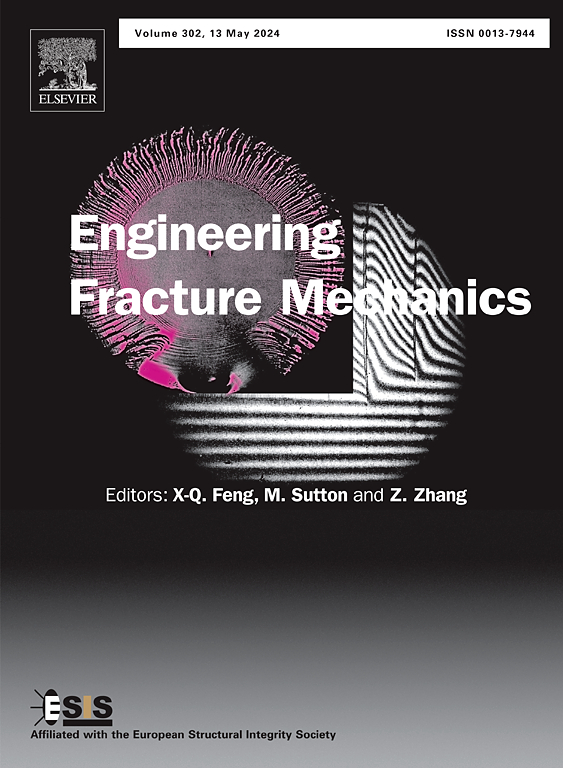Brittle crack propagation simulation based on the Virtual Element Method and Jk-integral fracture criterion
IF 4.7
2区 工程技术
Q1 MECHANICS
引用次数: 0
Abstract
Crack propagation simulation is a challenging topic in computational fracture mechanics, and the main issue is modeling the displacement discontinuity in the existing finite element mesh. The Virtual Element Method (VEM), as an extension of the Finite Element Method (FEM), permits the usage of arbitrarily shaped elements, including non-convex polygons or elements with hanging vertices, and has no distortion sensitivity. These features greatly facilitate VEM in addressing the crack propagation problem. An arbitrary crack propagation path can be achieved during the crack propagation process because the local mesh can be modified by adding or deleting vertices and/or edges, and by splitting one element into two polygons. This study simulates brittle crack propagation by the VEM with an element split strategy. The -integral fracture criterion has been employed to determine the crack initiation and predict the crack propagation direction for mixed-mode loading conditions. The -integral is computed directly by the path integral rather than by the domain integral, and its conservation has been verified. Some numerical applications have been implemented, including a mode-I crack problem test, a shear test of a single-edge notched plate and two different three-point bending tests. The numerical results show good agreement with the experiments, which verify the validity of the proposed simulation method for crack propagation.
求助全文
约1分钟内获得全文
求助全文
来源期刊
CiteScore
8.70
自引率
13.00%
发文量
606
审稿时长
74 days
期刊介绍:
EFM covers a broad range of topics in fracture mechanics to be of interest and use to both researchers and practitioners. Contributions are welcome which address the fracture behavior of conventional engineering material systems as well as newly emerging material systems. Contributions on developments in the areas of mechanics and materials science strongly related to fracture mechanics are also welcome. Papers on fatigue are welcome if they treat the fatigue process using the methods of fracture mechanics.

 求助内容:
求助内容: 应助结果提醒方式:
应助结果提醒方式:


